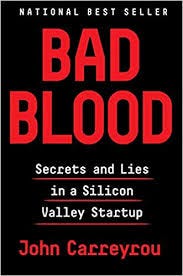Latest news about Bitcoin and all cryptocurrencies. Your daily crypto news habit.
I recently finished reading John Carreyrou’s Bad Blood, a gripping true story of greed, lies and hubris in the Silicon Valley. Midway through the book, I found an interesting anecdote.
 Write an email more than 500 words
Write an email more than 500 words
A young mechanical engineer finds a way to manage his overbearing and annoying boss, Sunny. Every time Sunny mails the young engineer asking for some information, he replies with an email that is longer than 500 words. “That usually brought him several weeks of peace because Sunny simply didn’t have the patience to read long emails.”
How many of us do that? Avoid reading long emails or skim through long articles? Irrespective of which generation we belong to, Gen X, Gen Y or Gen Z, we all are now part of what has come to be known as Generation TL;DR (too long; didn’t read).
Welcome to the age of information overload. But is that all there is to it or have we all developed what author and teacher Clay Shirky terms as filter failure? In other words, do we keep blaming the other guy for throwing so much information at us, or does the problem lie with us — that we have now put filters in place to process information selectively.
The information overload is not going to go away, and, in fact, will continue to increase relentlessly because the world has switched from the “filter, then publish” mode of the non-digital world to the “publish, then filter” model of the digital world.
We use time as the first filter to plan our priorities for the day. However, the world we live in today is no longer about time; it is about “attention”.
On any given day, you have about 8–10 hours of work time, but possibly only 3–4 hours of attention time. You may “block” your time for a 2-hour meeting, but you “pay” attention for maybe just 15 minutes. The verb “paying” just shows how valuable our attention is.
The primary filter, therefore, needs to move from “how do I manage my time?” to “how do I manage my attention?”
The good news is that it is possible to build an effective attention management strategy because this is going to be one of the most desired skills in the workplace of the future.
The first step in managing your attention is, well, to pay attention to your attention. In psychology speak, this is called metacognition, or thinking about your thoughts. Popularly practised as mindfulness, paying attention to your attention is about letting go of time consciousness, and building attention consciousness. If I am in a meeting, how focused am I in the meeting?
Thinking through what you want to achieve during the day, rather than managing tasks in your to-do list, is a way of paying attention to attention.
Pause every few hours to check with yourself: What am I doing right now? Is it important for achieving the goals I set for myself? If not, why am I doing this? Technology is here to help you. There are many “reflection apps” that encourage you to pause during your busy day and do a quick filter check.
The second step in managing your attention is to pay attention to the content of your attention. It is often called critical consumption filter, but noted communication specialist Howard Rheingold borrows a phrase from Ernest Hemingway to call it, well, a crap-detection filter.
Ask yourself, is the information you are consuming going to help further your goals for the day? Email is a zillion times more boring than watching cat memes, but in all likelihood, it is hopefully closely related to at least some of your goals for the day.
The third step in managing your attention is to build filters that go beyond the dumb simplicity of machine algorithms. Filtering emails by “not marked in the ‘To’ list” is easy to implement. However, by doing so, you outsource your prioritization filter to a machine, and to another human, who decided to add you to the “CC” list rather than the “To” list while sending out the mail. The content of the mail, which should be the most important filter, is no longer important.
Noted productivity expert Merlin Mann’s Inbox Zero is often confused with having zero mails in the inbox. Mann says Zero Inbox “is the amount of time an employee’s brain is in his inbox”. Converting your mailbox into a to-do list is selecting one of the poorest filters to manage information.
Beyond work, build your own content based filters, or let expert human curators do it for you, for your interest areas. If you are interested in technology, Benedict Evans’ weekly newsletter is a far better information source than automated e-mailers from various technology-focused publishers.
Your attention is precious, why let it be passively consumed, without any reflection? Your attention needs your attention first.
This write-up was originally published in Mint daily, here
Three steps to manage your attention in a distracted world was originally published in Hacker Noon on Medium, where people are continuing the conversation by highlighting and responding to this story.
Disclaimer
The views and opinions expressed in this article are solely those of the authors and do not reflect the views of Bitcoin Insider. Every investment and trading move involves risk - this is especially true for cryptocurrencies given their volatility. We strongly advise our readers to conduct their own research when making a decision.
